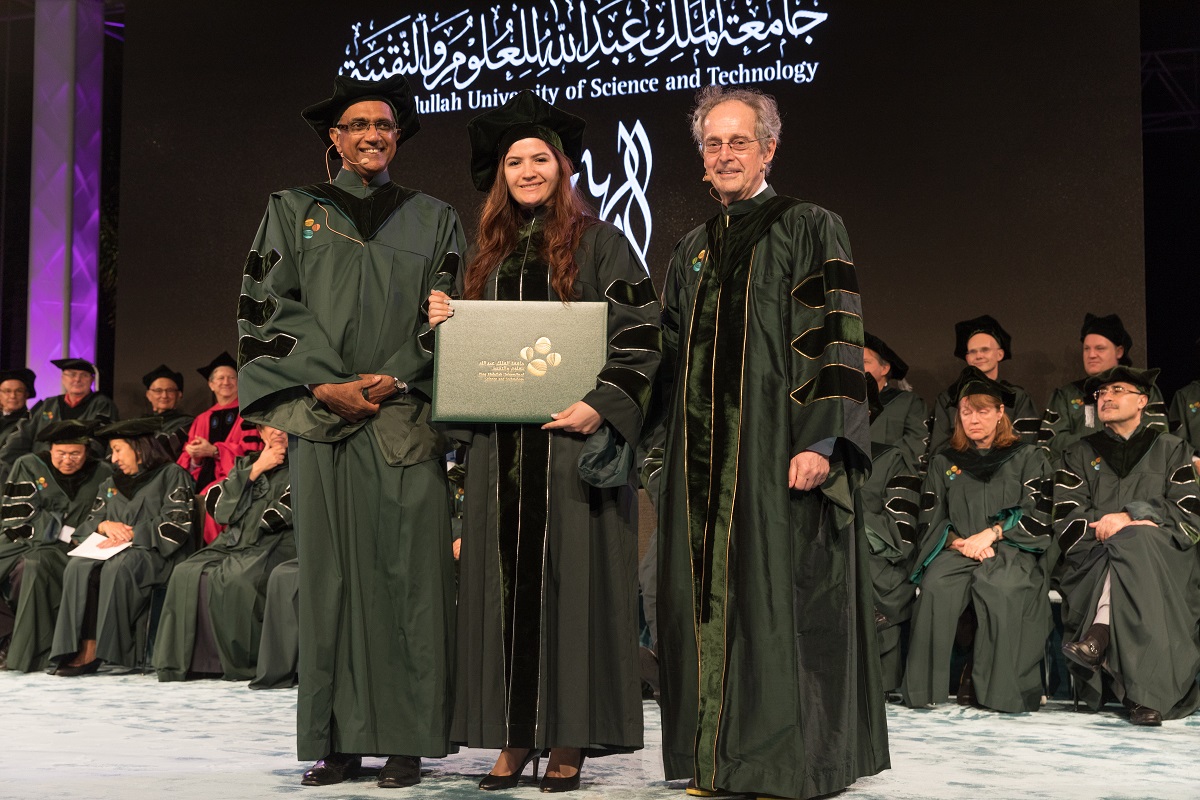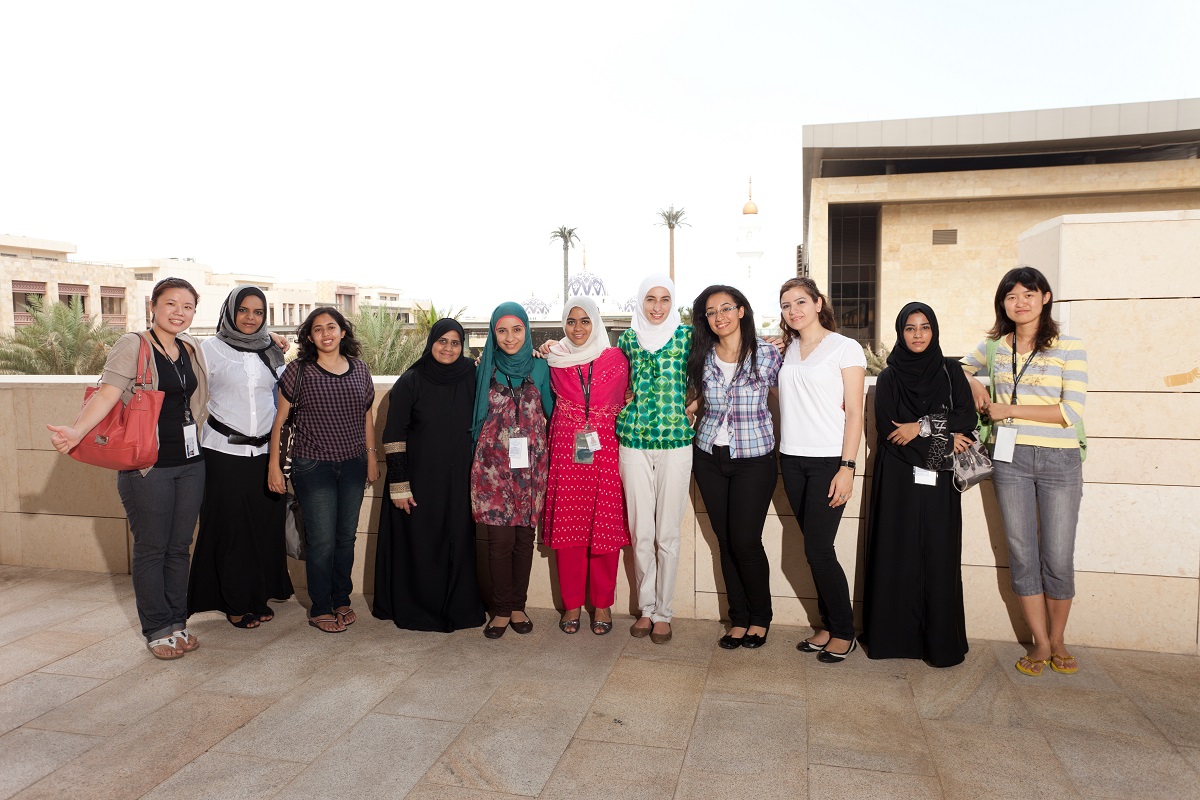Alumni Focus: Nadia Kouraytem

KAUST alumna Nadia Kouraytem received her master's degree ('13) and Ph.D. ('16) in mechanical engineering from the University. She is pictured here receiving her Ph.D. in December 2016. Photo by Helmy Alsagaff.
By Tanya Petersen, KAUST News
A native of Beirut, Lebanon, KAUST alumna Nadia Kouraytem (M.S. '13, Ph.D. '16) loves her new research area on metal additive manufacturing.
As a postdoctoral researcher in the Mechanical Engineering Department at the University of Utah, Kouraytem is working at the cutting edge of the 3D printing of metals—also known as laser-based metal additive manufacturing. The technique is shaping up to be part of the new industrial revolution due to its ability to quickly manufacture complex parts.
While completing her master's degree and Ph.D. at KAUST, alumna Nadia Kouraytem worked in the University's High-Speed Fluids Imaging Laboratory. File photo.

Alumna Nadia Kouraytem (third from right) is pictured here in August 2011 during the University's Orientation before she began her master's degree. File photo.
Kouraytem noted she feels her time at KAUST helped her develop a direction for her career. After completing her undergraduate studies in mechanical engineering at the American University of Beirut, Kouraytem joined the University in August 2011 as a master's degree student in the Mechanical Engineering program. When she learned about the High-Speed Fluids Imaging Laboratory (HSFIL), she joined HSFIL for research credit and ended up loving experimental work using high-speed cameras and investigating scientific questions involving different fluids.
Kouraytem's KAUST advisor Professor Sigurdur Thoroddsen's passion for fluids and his continued encouragement in the lab motivated her in her studies.
Nadia Kouraytem (M.S. '13, Ph.D. '16) works with her advisor, KAUST Professor Sigurdur Thoroddsen, in his High-Speed Fluids Imaging Laboratory. File photo.
Kouraytem worked on multiple projects during her Ph.D., most of which utilized high-speed imaging to study different phenomena in fluids or fluid-like behavior. These included: investigation of the penetration of a metal sphere during its impact on bi-modal, polydisperse granular media; investigation of the formation of microbeads during vapor explosion of low melting temperature metal; investigation of vapor explosions during the impact of a droplet on a pool of heated oil; and other experimental investigations of impacts, such as the rebound of a heated metal sphere impacting on ice.
Alumna Nadia Kouraytem (right) stated KAUST Professor Sigurdur Thoroddsen (left), her advisor during her master's degree and Ph.D. studies, 'motivate[d] me to try again and not let go because I had been learning from the failures, meaning that I was closer to a great discovery!' File photo.
"Living at KAUST is an enriching, unique experience that—through individuals—brings the world...to you. I advise current students to get involved, give back to your community and serve your fellow students. KAUST is a place where I established lifelong friendships...and grew as a person and researcher," she concluded.

